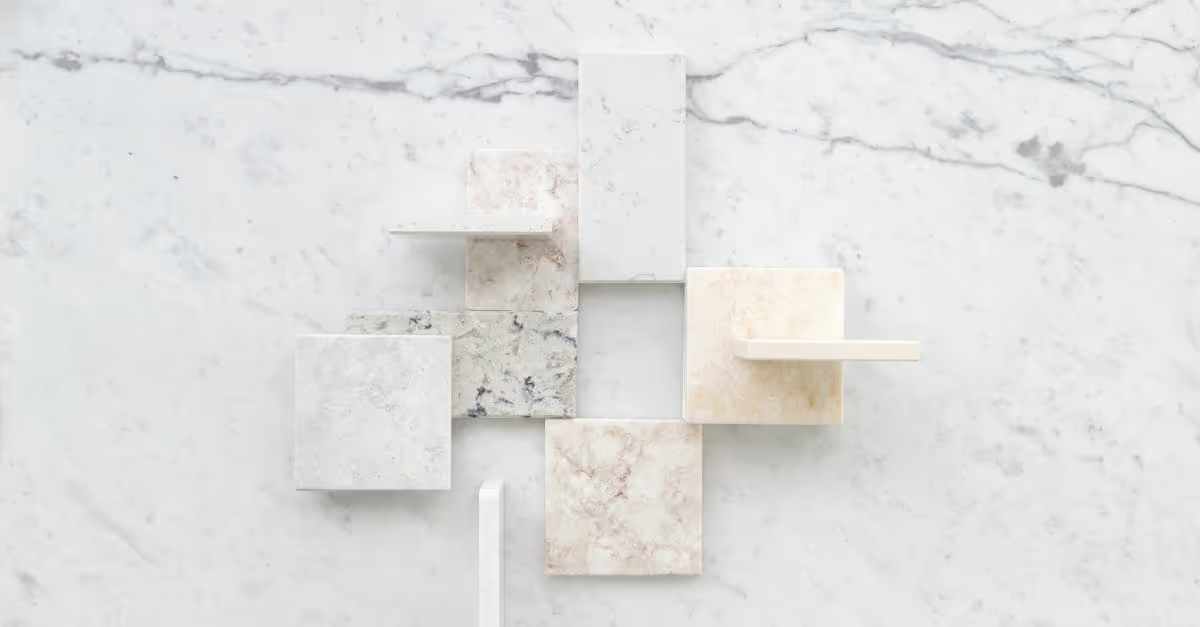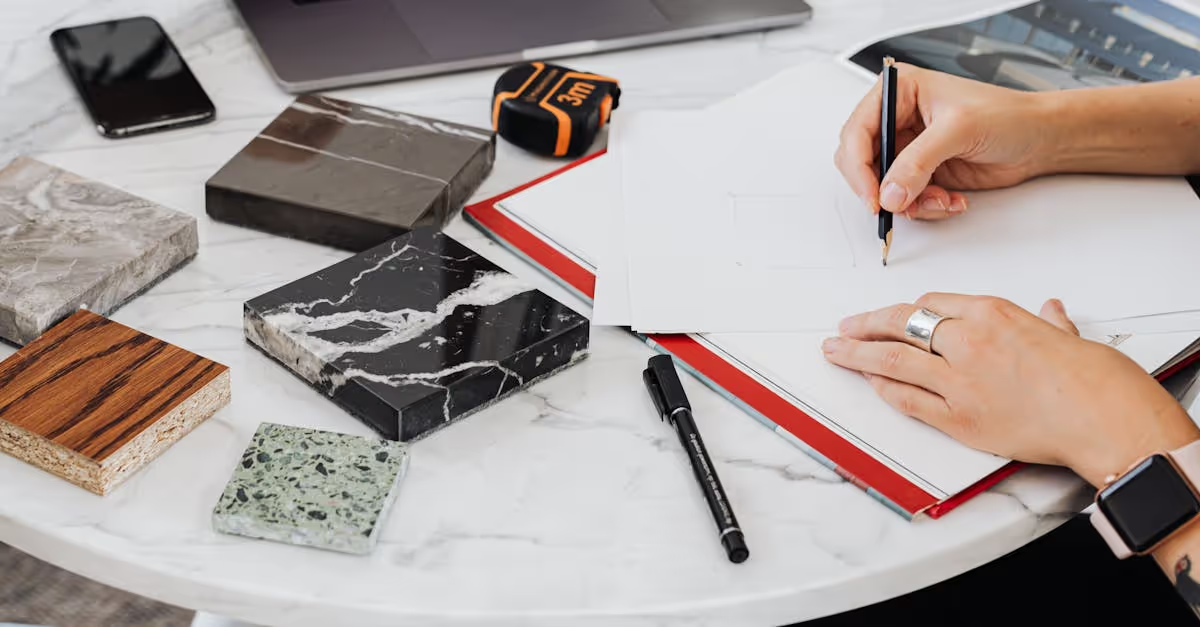Key Takeaways
- Material Choices Matter: Selecting the right coping materials, such as natural stone, concrete, pavers, or brick, can greatly affect both the aesthetic and functionality of your pool area.
- Aesthetic Harmony: The design of pool coping should complement your home’s architecture and landscape, ensuring a cohesive style that enhances visual appeal.
- Climate Considerations: Keep in mind climate effects on material selection; lighter colors and textures can help maintain cooler surfaces in sunny areas, while darker options may absorb heat.
- Budget Wisely: High-quality materials may come with a larger upfront investment but can lead to long-term savings through reduced maintenance and improved durability.
- Professional Guidance: Engaging with professionals can streamline the renovation process, ensuring optimal material choices and installation practices tailored to your specific needs.
- Plan for Unexpected Costs: Always include a contingency budget for unforeseen structural repairs or additional expenses that may arise during the renovation.
Renovating pool coping can transform not just the look of our pool area but also its functionality. With over 10 million residential pools in the U.S., the demand for stylish and durable coping options is higher than ever. Whether we're updating an old pool or enhancing a new one, choosing the right materials and designs can significantly impact the overall aesthetic and safety of our space.
Overview of Pool Coping Renovation
Renovating pool coping significantly improves the pool area’s style and usability. We focus on both functional and visual aspects when considering materials and designs. The right choices elevate not just the safety of the space but also its overall appeal.
Plastic and concrete are popular materials for pool coping. Concrete offers durability and a variety of finishes, such as stamped and colored styles. For those seeking comfort, pool coping made from natural stone like flagstone or travertine provides an elegant, slip-resistant solution. Each material presents its benefits, influencing both aesthetics and utility.
Another key material is pavers. They come in various shapes, sizes, and colors, allowing us to personalize the pool area. Pavers exhibit flexibility; if damage occurs, it's easy to replace just one or two rather than the entire section. This feature makes pavers a practical choice.
When selecting materials, we factor in climate conditions. For instance, some stones can become excessively hot under the sun, requiring alternatives for higher temperatures. Our choice of color also impacts heat absorption. Lighter colors tend to stay cooler, enhancing comfort for poolside lounging.
Aesthetic considerations greatly shape the renovation. The style of coping should harmonize with the overall landscape, complementing the home’s architecture. A modern home may benefit from sleek, straight edges, while a more traditional setting might suit rounded or textured coping.
Incorporating landscaping elements enhances visual appeal. Plants, decorative stones, and lighting around the pool can draw focus to the renovated area. For example, we can light up the coping at night, creating a stunning ambiance for evening gatherings.
Budget presents another consideration. Quality materials may have higher upfront costs but yield longer lifespans and less maintenance. We often find that cutting corners on coping can lead to expenses down the line. Assess your priorities, whether it’s aesthetics, durability, or functionality.
While evaluating options, one might think about how often we use the pool. High-traffic areas may demand sturdier selections, while less accessible places can embrace more delicate designs. It’s all about what fits our lifestyle best.
Every detail matters in pool coping renovation. From choosing the right materials to ensuring cohesive style with our surroundings, thoughtful planning streamlines the process. Engaging professional help can also guide us through choices, ensuring an optimal outcome.
Material Options
Selecting the right materials for pool coping significantly impacts aesthetics and functionality. Our options include natural stone, concrete, pavers, and brick, each with distinct advantages.
Natural Stone
Natural stone coping, like granite or flagstone, provides a luxurious look and exceptional durability. Its unique texture feels cool underfoot, which is perfect for hot summer days. The wide range of colors and patterns allows us to match any outdoor decor. However, this option can be pricier upfront but often pays off in longevity. It’s like investing in a good pair of shoes; the initial cost seems high, but the comfort and durability make it worth it. What natural stone appeals to you for your pool project?
Concrete
Concrete coping stands out as an economical and versatile option. It can mimic other materials, such as stone or wood, through stamping and staining techniques. This provides a customized look at a lower price point. Plus, it’s durable and withstands various weather conditions. With proper sealing, we can avoid cracks and damage. Just think of it as the dependable sibling in our design family—always there and reliable. Are you thinking about how concrete can fit your style?
Pavers
Pavers offer flexibility and style, coming in various shapes, sizes, and materials. They allow us to create unique designs that can emphasize specific areas of our pool. One of their benefits includes ease of replacement; if one paver gets damaged, we can replace it without disrupting the whole area. It's like having a favorite puzzle piece—you only need to swap out one piece to keep the picture intact. Would you prefer the layered look of pavers for your pool edge?
Brick
Brick coping delivers a classic and timeless look. Its rich color and warm texture amplify the charm of our pool area, making it feel inviting. Brick is also durable, able to withstand the elements while developing a beautiful patina over time. This option is often used in traditional designs yet can also suit modern aesthetics with the right layout. Think of brick as the comforting cup of coffee that’s always there, no matter the design trend. What feelings does brick evoke for your space?
Aesthetic Considerations
Aesthetic factors play a crucial role in choosing pool coping materials. The right design not only enhances the pool's appearance but also complements the overall landscape and architecture of our homes.
Color and Texture
Color and texture significantly impact the visual appeal of our pool area. Lighter tones, like soft whites or light grays, reflect sunlight, keeping the coping cool to the touch. Darker colors absorb heat, offering warmth but requiring careful consideration in hotter climates. Choosing textured surfaces can improve grip around the pool, enhancing safety. For instance, a sandy or dimpled finish provides traction, while smooth surfaces exude elegance. When selecting colors and textures, think about the overall theme of our outdoor space. Does the coping match our backyard décor? Don’t hesitate to sample a few shades and finishes before making that final decision.
Design Styles
Design styles should harmonize with our property and personal tastes. From modern minimalist to classic rustic, our choice defines the space. Sleek concrete coping suits contemporary designs, while natural stone adds a touch of tradition. Pavers offer flexibility, allowing for creative patterns that can add flair. When considering styles, think about the existing elements in the backyard. Would a modern coping style clash with a vintage garden? Let’s explore our options together and visualize the final look. Picturing how different materials interact with our landscape can guide us to decisions that elevate our pool’s overall charm.
Incorporating thoughtful aesthetic choices can significantly enhance the functionality and beauty of our pool area.
Cost Considerations
Renovating pool coping involves costs that vary widely based on material and design choices. Understanding these costs helps us budget effectively and make informed decisions.
Natural Stone Costs
Natural stone coping options like travertine and bluestone provide both beauty and durability. They typically cost between $45 and $55 per linear foot. While the investment is higher, these materials add value and elegance to our pool area.
Concrete Coping Costs
Concrete coping comes in two primary types: cantilevered and concrete pavers.
- Cantilevered Concrete Coping: This method involves pouring concrete at the pool's edge, delivering a smooth finish. It’s affordable, with costs ranging from $6 to $10 per linear foot.
- Concrete Pavers: Pre-cast concrete pavers create a consistent look. Their typical cost is between $40 and $50 per linear foot. These pavers are versatile and easy to maintain, making them a practical option.
Budgeting for Aesthetics
When planning our budget, we consider both the initial costs and long-term benefits. Did you know that investing in quality coping materials often results in reduced maintenance costs? By choosing slip-resistant options, we enhance safety, which can minimize accidents.
Additional Costs
Beyond materials, renovations may incur labor expenses. Hiring skilled professionals guarantees the job is done right. Local labor rates vary; thus, researching contractors can save us money.
Do we want to invest in automation tools like service business software for ongoing maintenance? These tools enhance scheduling and management, providing cost efficiency in the long run. Additionally, exploring job scheduling software can streamline our renovation projects, ensuring we stick to our budget and timeline.
Unexpected Expenses
We might encounter unforeseen costs due to underlying issues like structural repairs or drainage problems. Keeping a contingency fund of about 10-15% of our total budget helps accommodate surprises.
By remaining diligent and informed about our choices, we can create an inviting and safe pool area that reflects our style. Are we ready to dive into this renovation project and enjoy the benefits of beautiful pool coping?
Conclusion
Renovating pool coping is more than just an aesthetic upgrade; it’s an investment in safety and functionality. By carefully selecting materials and designs that complement our outdoor spaces, we can create a welcoming environment that enhances our pool experience.
Considering factors like climate and texture will help us choose the right coping that suits our needs while adding visual appeal. With a well-planned budget and a clear vision, we can transform our pool area into a stylish and safe retreat that reflects our personal style. Let’s embrace the opportunity to elevate our outdoor living spaces through thoughtful renovations.
Frequently Asked Questions
What is pool coping, and why is it important?
Pool coping is the material that edges the pool, providing a finished look and creating a safe transition between the pool and surrounding deck. It enhances safety, helps contain water, and contributes to the overall aesthetic of the pool area.
What materials are commonly used for pool coping?
Common materials for pool coping include natural stone (like granite and flagstone), concrete, pavers, and brick. Each material offers unique benefits in terms of durability, style, and cost, allowing homeowners to choose based on their preferences and budget.
How does climate affect pool coping choices?
Climate plays a significant role in selecting pool coping materials, as some materials absorb more heat than others. Lighter colors reflect sunlight, keeping the area cooler, while darker colors can become hot in sunny climates. It’s important to consider comfort around the pool.
What is the cost of renovating pool coping?
The cost of pool coping renovation can vary widely. Natural stone options typically cost between $45 and $55 per linear foot. In contrast, concrete coping ranges from $6 to $10 per linear foot for cantilevered styles and $40 to $50 for concrete pavers, depending on your choices.
Should I hire a professional for pool coping renovations?
Hiring a skilled professional for pool coping renovations is often recommended. Professionals can ensure proper installation, address potential issues, and provide quality workmanship, which can save money and time in the long run.
How can I enhance the aesthetic appeal of my pool area?
To enhance the aesthetic appeal of your pool area, consider selecting coping that harmonizes with your home's architecture and landscaping. Choosing complementary colors, textures, and incorporating landscaping elements can create an inviting space that reflects your style.
What is the importance of budgeting for pool coping renovation?
Budgeting for pool coping renovation is crucial as it helps manage initial costs and anticipate future expenses. Quality materials may have higher upfront costs but can reduce maintenance expenses over time, providing long-term benefits and improved safety.






